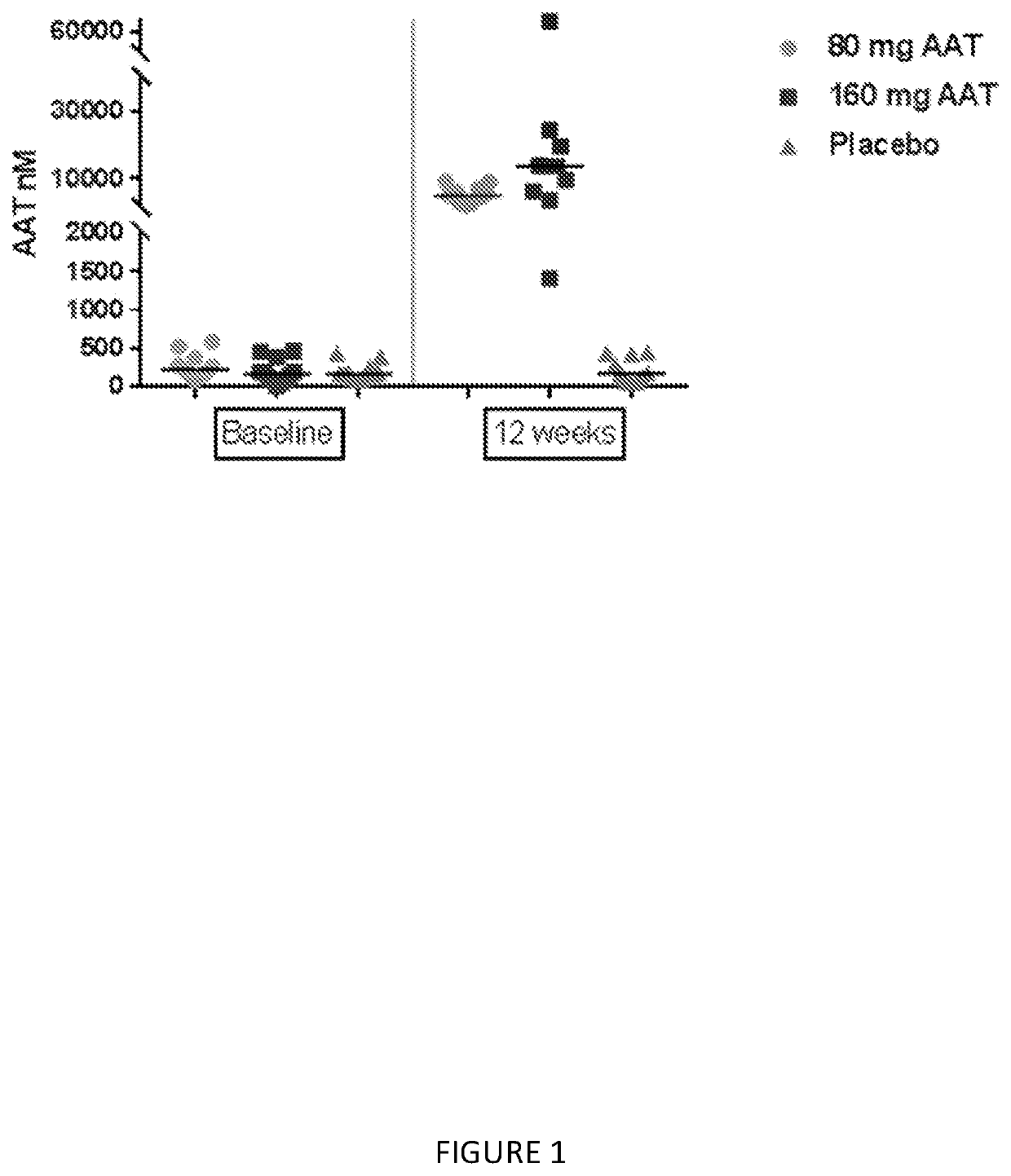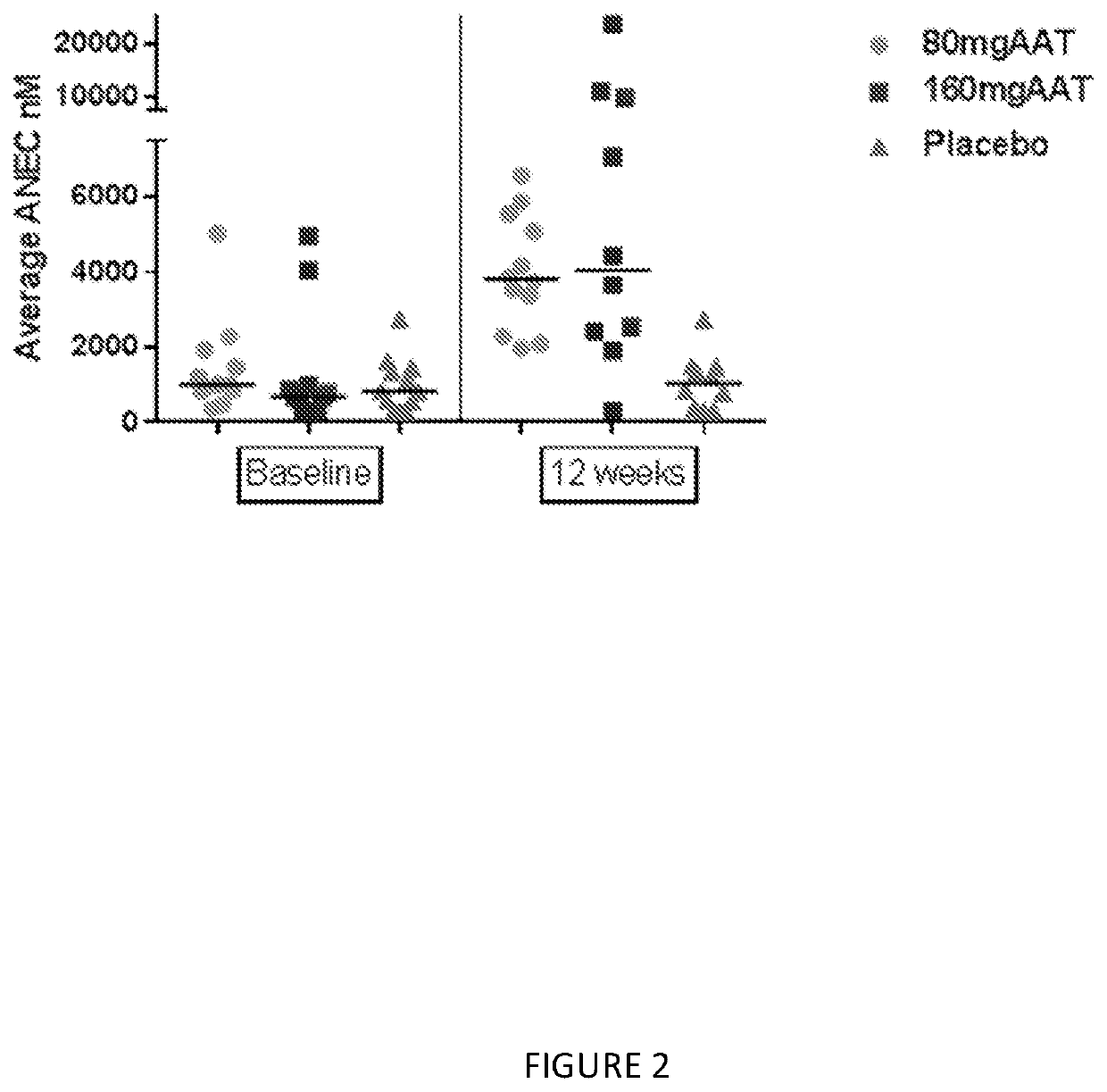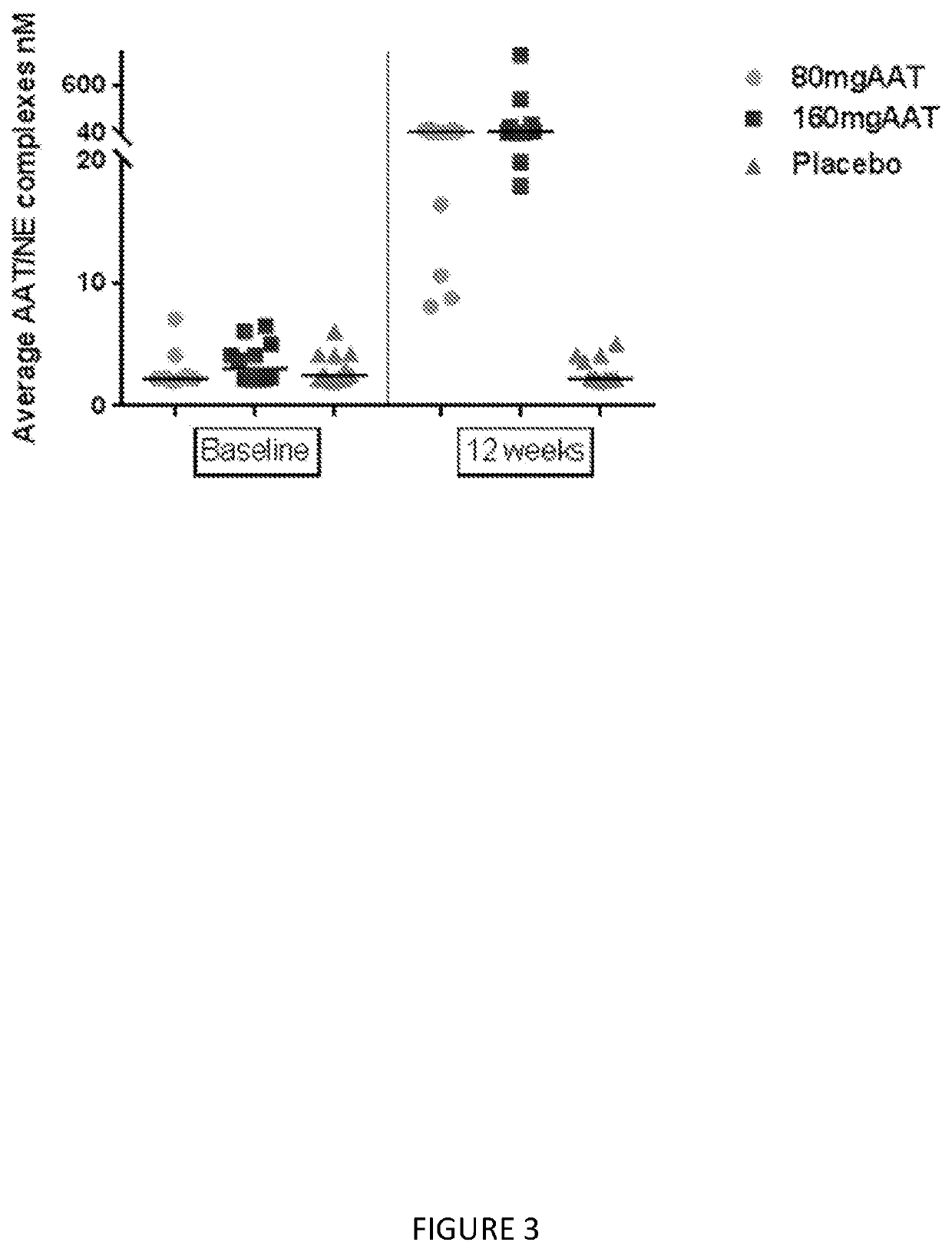Methods and uses of alpha 1-antitrypsin for early intervention in pulmonary diseases
a technology of antitrypsin and pulmonary disease, which is applied in the direction of spray delivery, peptide/protein ingredients, respiratory disorders, etc., can solve the problems of reducing the elastic recoil of the lung, reducing the severity of cystic fibrosis, and preventing or lessening the severity of alpha 1-antitrypsin deficiency (aatd)
- Summary
- Abstract
- Description
- Claims
- Application Information
AI Technical Summary
Benefits of technology
Problems solved by technology
Method used
Image
Examples
example 1
lpha-1-Antitrypsin Restores Lower Respiratory Tract Protease-Anti-Protease Homeostasis and Reduces Inflammation in Alpha-1 Antitrypsin Deficient Individuals
[0106]This example describes a placebo-controlled, double blind, randomized study of inhaled, nebulized AAT conducted in subjects diagnosed with AAT deficiency.
[0107]The aim of this study was to evaluate two different doses of AAT for inhalation on the levels of AAT and other analytes in epithelial lining fluid (ELF) and plasma, and to assess the safety of the treatment in subjects with alpha-1 antitrypsin deficiency (AATD).
[0108]Study Design:
[0109]Two separate groups of 18 PI ZZ individuals (FEV1≥50%) were evaluated using bronchioalveolar lavage (BAL) before and following 12 weeks of inhaled AAT using a dose of 80 mg once or twice a day (160 mg). The dosing groups where at two separate sites; subjects were randomized in a double blind 2:1 fashion to active AAT or placebo. After 12 weeks subjects received 160 mg of AAT for an add...
example 2
ation of AAT Significantly Increased the Levels of AAT, AAT Complex and ANEC in Subjects at Early Stages of the Disease (with FEV1% of Predicted ≥80%)
[0131]Methods:
[0132]For each subject with FEV1% of predicted ≥80% a change from baseline of the parameters was calculated. Descriptive statistics of Number of subject, mean, Standard Deviation, median, minimum and maximum were calculated. Non-parametric ANOVA approach to test for differences between treatment groups were applied using Kruskal-Wallis test, and p-values adjusted for multiple comparisons was calculated (FDR p-values).
[0133]Results:
[0134]The numbers of subjects in the subgroup of subjects with FEV1% of predicted ≥80% are 5, 7 and 4 subjects in Placebo, 80 mg and 160 mg, respectively. As shown in Table 1, significant finding were demonstrated in Average AAT, AAT complex, and ANEC.
[0135]The median AAT in 160 mg and 80 mg treatment groups were higher than placebo, 10 nmol versus 4017 nmol and 16,596 nmol respectively p-value=...
example 3
AAT Early Intervention Treatment on Elastase-Induced Chronic COPD Model in Mice
[0137]The aim of this study was to test the effect of AAT as an early intervention treatment in elastase-induced chronic COPD model in mice.
[0138]Principle of the Test:
[0139]The principle of the test is based on the induction of COPD by intratracheal instillation of elastase once a week for four weeks, with or without prophylactic AAT treatment in the day previous to the elastase instillation. The feasibility of the COPD model in mice using intratracheal instillation of porcine pancreatic elastase (PPE) was tested in a previous pilot study with 6 mice and results were compared to 2 control mice. PPE treatment was shown to induce alveolar destruction in lungs of mice, while saline treatment did not affect the lungs.
Experimental Procedure
[0140]Two groups of mice, each with 15 Females C57BL / 6J mice (20-25 g, 10 weeks of age) were randomly assigned.
[0141]Group A (treated with AAT): mice were anesthetized and ...
PUM
| Property | Measurement | Unit |
|---|---|---|
| diameter | aaaaa | aaaaa |
| temperature | aaaaa | aaaaa |
| temperature | aaaaa | aaaaa |
Abstract
Description
Claims
Application Information
 Login to View More
Login to View More - R&D
- Intellectual Property
- Life Sciences
- Materials
- Tech Scout
- Unparalleled Data Quality
- Higher Quality Content
- 60% Fewer Hallucinations
Browse by: Latest US Patents, China's latest patents, Technical Efficacy Thesaurus, Application Domain, Technology Topic, Popular Technical Reports.
© 2025 PatSnap. All rights reserved.Legal|Privacy policy|Modern Slavery Act Transparency Statement|Sitemap|About US| Contact US: help@patsnap.com



